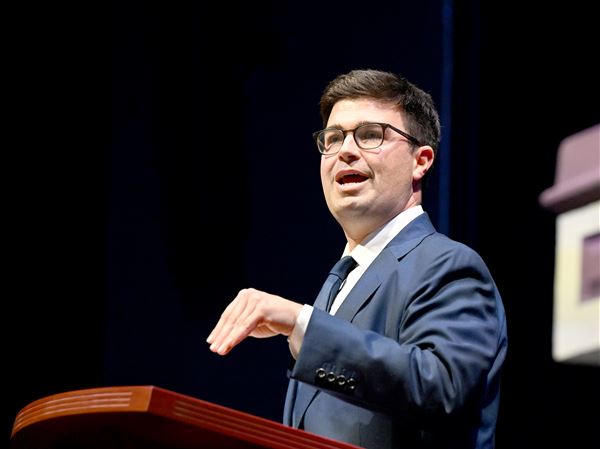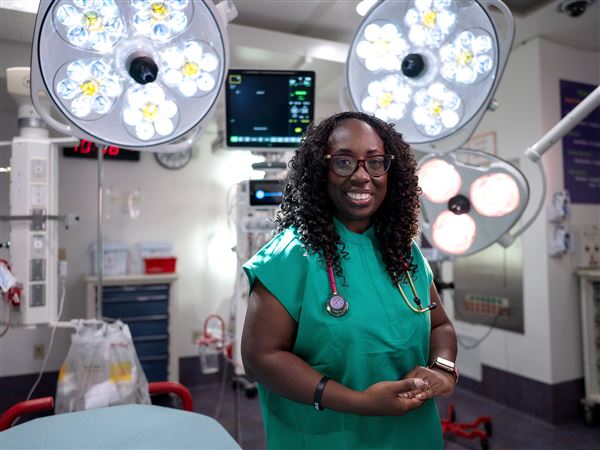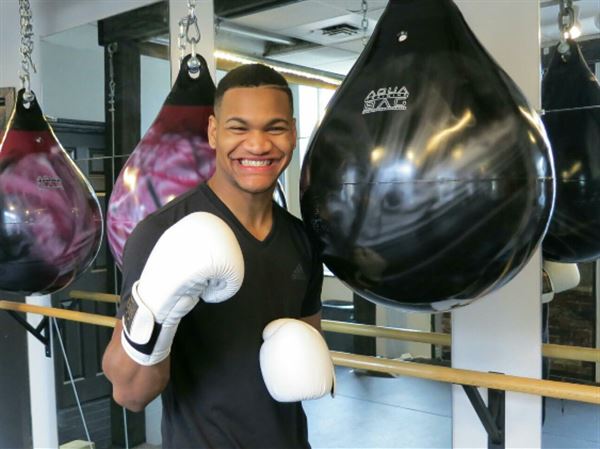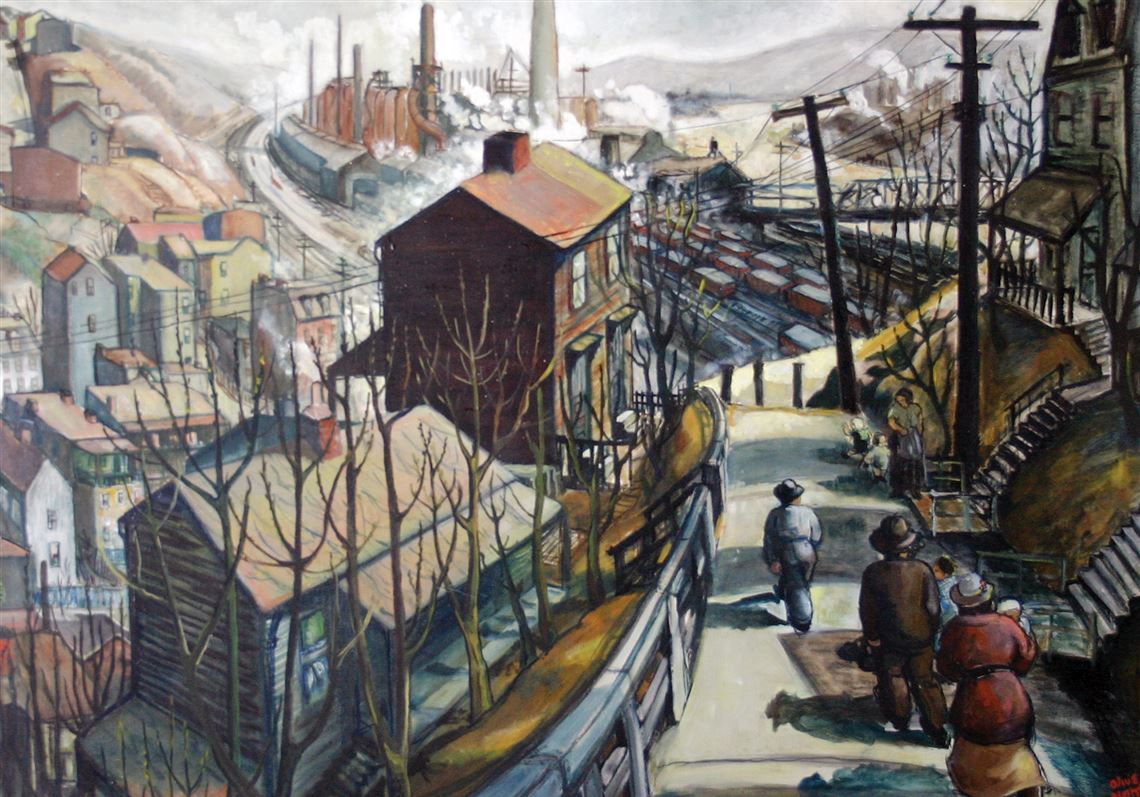“The Gift of Art: 100 Years of Art from the Pittsburgh Public Schools’ Collection,” which opens Nov. 16 at the Heinz History Center, is a one-time opportunity to see the fruits of a unique philanthropic endeavor under one roof.
In 1916 Pittsburgh businessman John L. Porter formed The 100 Friends of Pittsburgh Art to support the acquisition of original artworks for the Pittsburgh Public Schools. The organization morphed into the Friends of Art, which continued to donate works by local artists to the schools until early this year.
Eighty-one works by nearly as many artists are included in the exhibition, representing a span stretching from the early years to contemporary acquisitions. Media include painting, sculpture, photography, fiberart and mixed media.
The original intent of The Friends was to expose students to art and to cultivate an appreciation for it. Due to the collection’s cumulative effect and its historic relevance, it has become much more.
Anne Madarasz, history center director of the curatorial division and chief historian, said similar types of collections arose in conjunction with arts education in the teens and 1920s as part of the Progressive Era. Urbanization and immigration were both in ascent, and educators wanted to “give children a sense of the aesthetic of the beautiful,” she said. Efforts in various urban and rural schools ranged from introductory instruction about the arts to teaching a critical understanding of what constitutes fine arts through use of tools like images of Old Masters works.
“Some, as here, brought work by living artists into the schools. What distinguishes Pittsburgh is that it has gone on for 100 years. The long-term personal and intellectual dedication makes it unique and extraordinary.”
The exhibition is a window into artmaking across that time, Ms. Madarasz said, but it is not exhaustive because Friends of Art works were selected for their appropriateness for and relevance to schools. “In a lot of ways, it signifies to the community of users: ‘This is special. This is relevant to our lives.’ It makes people see it again.”
People become used to things that are always there and walk past them without notice, she said. Presenting the art in a major institution “says this has value, this is something you should appreciate and maintain and take care of.”
While public, this art has never been shared outside the schools, Ms. Madarasz said. “A person may have seen one work in a school, but this is a chance to see 20 percent of the collection in one place at one time.”
The Friends purchased art for the schools from the Associated Artists of Pittsburgh annual exhibitions, and that organization, which makes claim to being the oldest artist-run organization in the nation, initiated the project that feeds this exhibition.
In 2009, as part of the Associated Artists of Pittsburgh's 2010 centennial celebration, members Adrienne Heinrich and Patricia Sheahan began to investigate ways to honor the Friends’ ongoing contribution. As co-chairs of the Friends of Art Centennial Project, they established programs to facilitate an understanding of the artwork.
As they explored the status of the collection, they recognized a need to locate and document objects within it. “We were finding work in closets and under stages,” Ms. Heinrich said. “Some were protected but not all. We became interested in saving the collection.”
Records were sparse and the project extended over several years. With the help of the History Center and middle school gifted students enlisted through the AAP “Taking a Closer Look!” program, 325 artworks were found in the schools and a nearly equal number were identified as missing.
A list of missing art, many pieces accompanied by images, will be the focus of a “Lost and Found” section of the exhibition with the hope that visitors may recognize having seen a work in a school closet or relative’s home.
Sometimes artworks were taken home when a school was closed or renovated. One person returned a painting in 2005 that had been given by the school as a retirement gift. “Unfortunately, the school didn't have the authority to do that,” said Pittsburgh Public Schools chief operations officer Richard Fellers at the time. Artist Roy Hilton’s “The New Dress” was purchased at a yard sale for $28 in 2006. When the purchaser took it to a gallery to be examined, it was identified as belonging to the collection and returned to the schools.
An amnesty was initiated in March promising no-questions-asked appreciation for any rediscovered artwork. Drop off locations are Concept Art Gallery, Regent Square; BE Galleries, Lawrenceville; Sally Gehl Art Loft, Mt. Lebanon; and James Gallery, West End.
The schools received a windfall in 2013 when a collection painting, “Interior, Light from the Window” by Henri Le Sidaner was sold at auction by Sotheby’s for a hammer price of $750,000. Deaccessioning from such a collection is generally frowned upon, but the French artist’s work was atypical because it came out of an International Exhibition at Carnegie Museum of Art and was not by a local artist.
Some of that money has been allocated for “care and restoration of the collection,” said Jody Guy, visual arts coordinator for the Pittsburgh Public Schools. The collection has since been appraised and insured, and security has been tightened. Conservation has been done on some of the damaged works and two-dimensional art has been given archival matting and sturdy frames and has been placed behind Plexiglas.
The exhibition continues through the end of the school year in mid-June, and Ms. Guy envisions it as a teaching opportunity not only within art classes but for multidisciplinary lessons. The schools are funding one bus for each of the Pittsburgh Public Schools for a field trip to the exhibit.
“We’re hoping that other school districts around the area and nonpublic schools will bring students,” Ms. Heinrich said.
The exhibition will live on, in a printed catalog that will include every work in the exhibition, and in a 500-page digital version that will include every work and be available as a continuing resource.
M. Thomas: mthomas@post-gazette.com or 412-263-1925.
First Published: November 6, 2016, 4:00 a.m.















